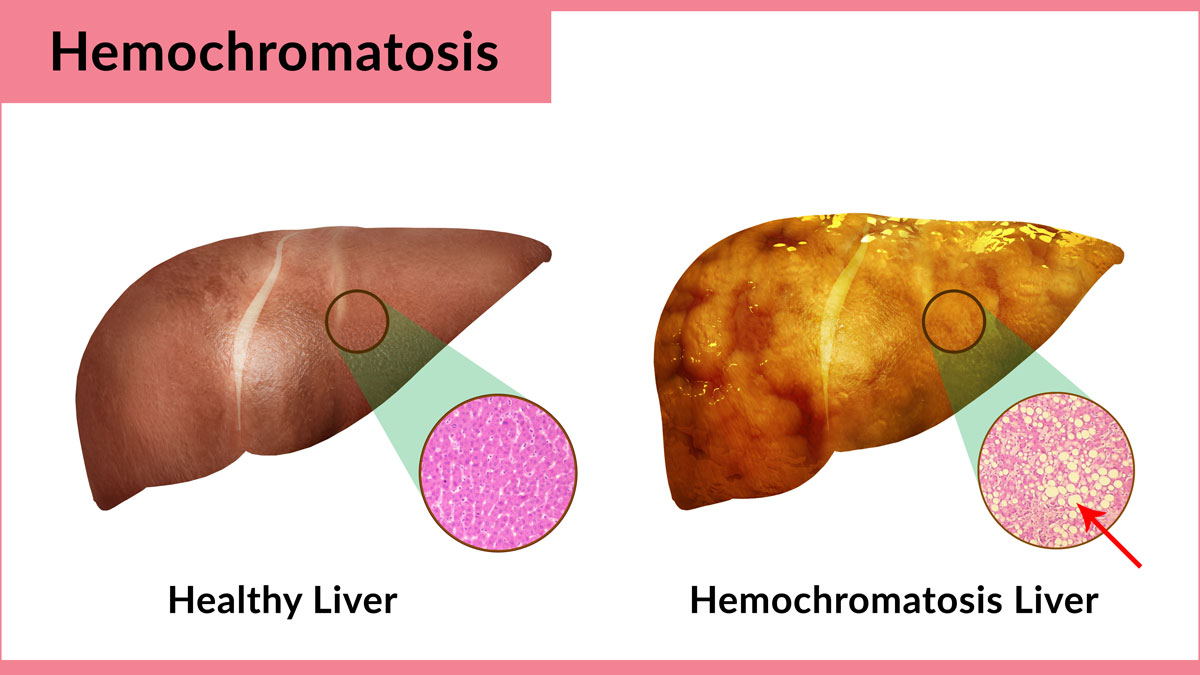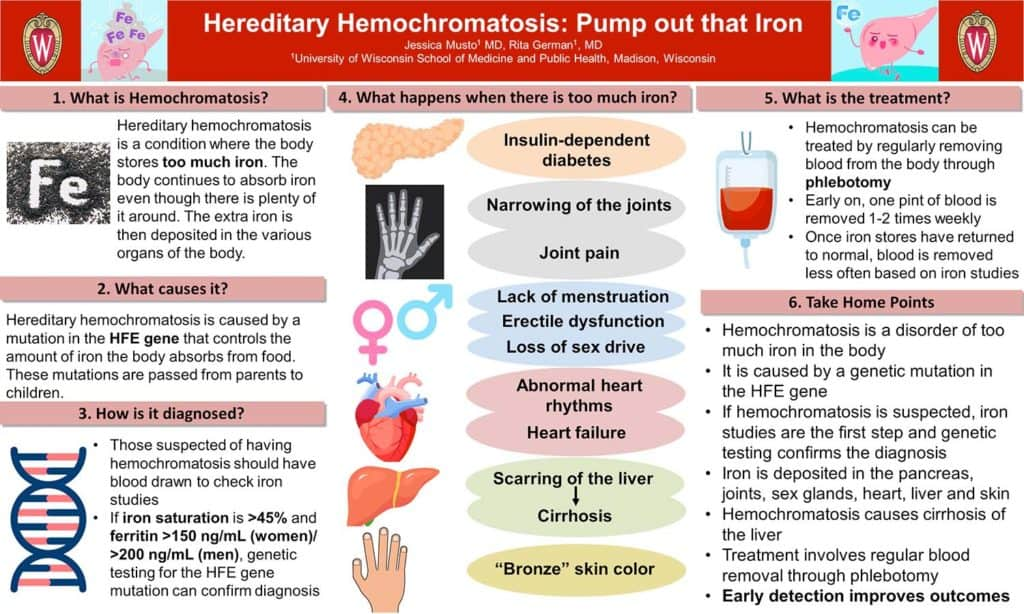Description

Copyright infringement not intended
Picture Courtesy: www.stepwards.com
Context: Hemochromatosis, often referred to as "bronze diabetes," is a rare genetic disorder characterized by excessive accumulation of iron in the body.
About Hemochromatosis
- Hemochromatosis is a genetic disorder that causes the body to absorb too much iron from food. The excess iron is stored in the body's organs and tissues, which can damage them over time.
- There are two main types of hemochromatosis:
- Hereditary Hemochromatosis: This form is caused by a mutation in the HFE gene, particularly the C282Y variant. Individuals with hereditary hemochromatosis have a defect in their ability to regulate iron absorption in the intestines, leading to excessive iron accumulation in the body over time.
- This excess iron can infiltrate and damage vital organs, including the liver, heart, and pancreas, resulting in health problems such as cirrhosis, heart failure, diabetes, and arthritis.
- Secondary Hemochromatosis: Unlike hereditary hemochromatosis, secondary hemochromatosis is typically caused by external factors like frequent blood transfusions, excessive iron supplementation, or certain medical conditions. The iron accumulation in secondary hemochromatosis tends to be more rapid and can similarly impact organ function.
- The symptoms of hemochromatosis can vary depending on the severity of the disease and how long it has been present. Some people with hemochromatosis may not experience any symptoms, while others may have severe symptoms that can interfere with their daily lives.
- Hemochromatosis can lead to various complications affecting different organs in the body:
- Liver: Cirrhosis is a common complication of hemochromatosis, with an increased risk of hepatocellular carcinoma.
- Pancreas: Excessive iron deposition in the pancreas can lead to diabetes.
- Joints: Arthritis-like symptoms can occur due to iron buildup in the joints.
- Heart: Iron accumulation in the heart can cause heart failure and cardiac arrhythmias.
- Hypogonadism: Iron-induced hypothalamic or pituitary failure can result in sexual dysfunction.
- Skin: Skin hyperpigmentation can occur due to iron and melanin deposition.
- Hemochromatosis is typically diagnosed with a blood test to measure the amount of iron in the blood. If the blood iron level is high, the doctor may order additional tests, such as a genetic test, to confirm the diagnosis.
- There is no cure for hemochromatosis, but it can be managed with treatment. The goal of treatment is to reduce the amount of iron in the body and prevent further damage.
- The most common treatment for hemochromatosis is phlebotomy, a procedure in which blood is removed from the body. Phlebotomy is typically done once or twice a week until the blood iron level is low enough. Once the blood iron level is low, phlebotomy may be done less often to maintain the desired level.
- There is no way to prevent hemochromatosis, but early diagnosis and treatment can help to prevent complications.

Picture Courtesy: liverfoundation.org
|
PRACTICE QUESTION
Q. Which of the following is a primary cause of Hemochromatosis?
A) High sugar intake
B) Genetic mutation
C) Vitamin deficiency
D) Exposure to radiation
Answer: B
Explanation: Hemochromatosis is primarily caused by a genetic mutation, specifically mutations in the HFE gene, leading to the excessive absorption of iron.
|


















